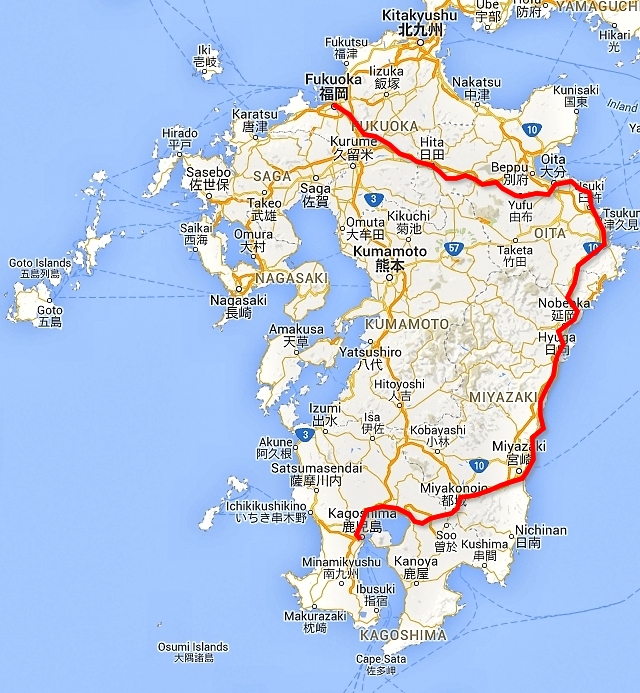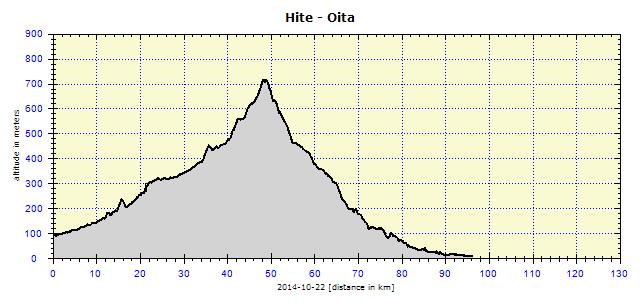
Nothing compares to the simple pleasure of a bike ride. J.F.Kennedy
Search this website
Japan, Kyushu Island
Fukuoka, Dazaifu, Hite, Amagasa, Yufuin, Oita, Usuki, Naokawa, Hyugo, Mimi, Miyazaki, Tano, Aoidake, Miyakonojo, Kagoshima
I was surprised that I slept so well on the ferry. The sea was calm, nobody was snoring (except maybe me) and lying on a thin mat was pleasant. The main reason was the real Japanese spa, with stools in front of a mirror, with hand showers where all the Japanese washed themselves for at least 10 minutes before diving into the spa. There were two pools with water of various temperatures. I lay around in them for almost half an hour. With one beer after that, I fell asleep immediately.
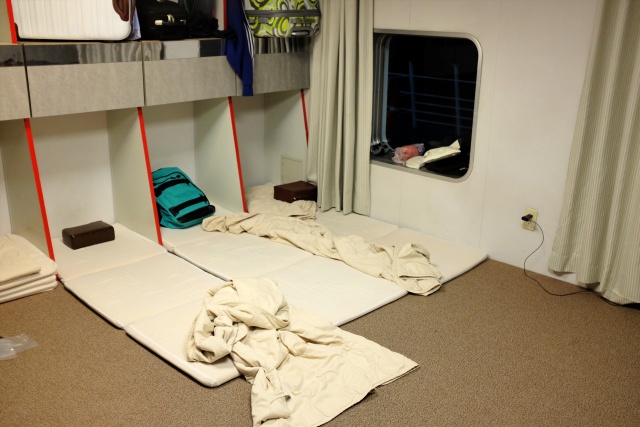
Busan: Economy class berths on the ferry to Japan
The bicycle was well handled, especially if compared with the ferry to Jeju Island. In Busan I handed in my bike, took off the panniers, which were to remain on it. The security officer scanned them and I attached them again on to the bike. After arriving in Fukuoka, I did not have to worry about a thing. I went through Passport control, beyond which the bicycle was already waiting for me. The quarantine staff waited for me there before washing the tires with a disinfectant. I entered Japan without any problems, leaving only the "place of stay" field blank on their form. They insisted that I complete it. I did not try to explain anything, remembering a business hotel where I had stayed 5 years before, wrote "Toyoko Inn" and we were all happy.
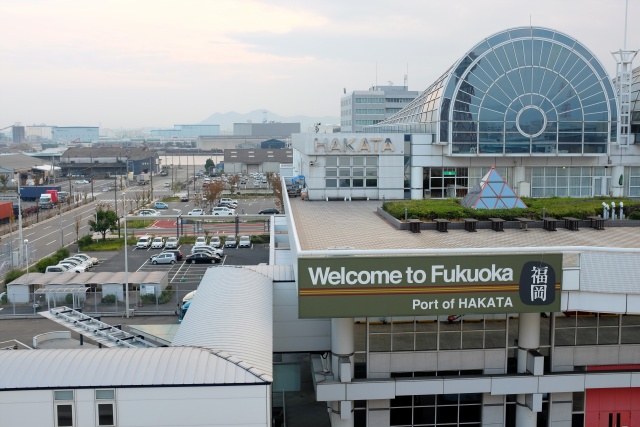
Fukuoka: Hakata harbor terminal
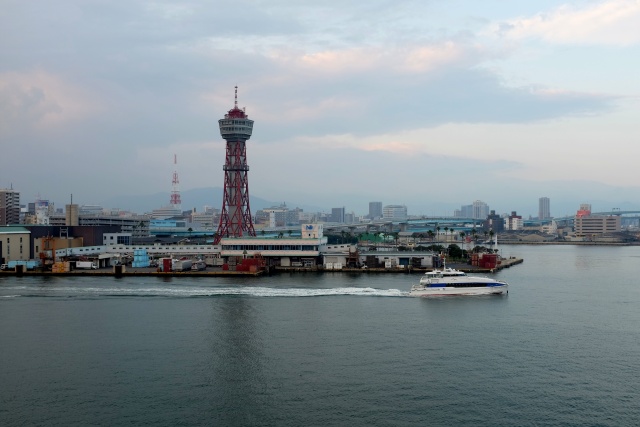
Fukuoka: Hakata harbor
I did not want to spend much time in Fukuoka. It had been the starting point of my 3-month trip around Japan 5 years previously. First of all, I wanted to take the shortest possible route to Kagoshima, but the morning weather was so good that I changed my plan and decided to cross the island to the East coast and make my way to Kagoshima along the ocean. I first wanted to stop in Dazaifu, where several temples were located which I had not seen before. Surprisingly, the GPS guided me through the city without any problems. I wanted to reach Hite, but this big city was not recognized at all by my GPS (just as it had not recognized Seoul in Korea).
Firstly, I needed some cash. The ATM in the harbor was only in Japanese. I tried in grocery stores which I passed. The ATMs in Lawson Station and other stores either did not have an English menu, or accepted only cards issued by Japanese banks. Finally, I succeeded in a 7-Eleven. I came across the big AEON shopping mall where I purchased a very detailed map of Kyushu. In the bicycle department, I finally managed to purchase a bike stand, as the flat spring on the existing one had split some weeks before. The spring is supposed to hold the stand locked at the rear in travel mode. However, the arm would fall down at every little bump and I would then keep hitting it with the pedal. I fixed it by hanging an elastic belt around it, but for every manipulation with the stand I had to bend down and release the arm manually. When replacing the stand, I cursed like mad. The screw was so tight that I had to find a suitable sewer, push the stand into it, and use it as a wrench, and only then did I manage to release it. Chinese laborers must have become very strong.
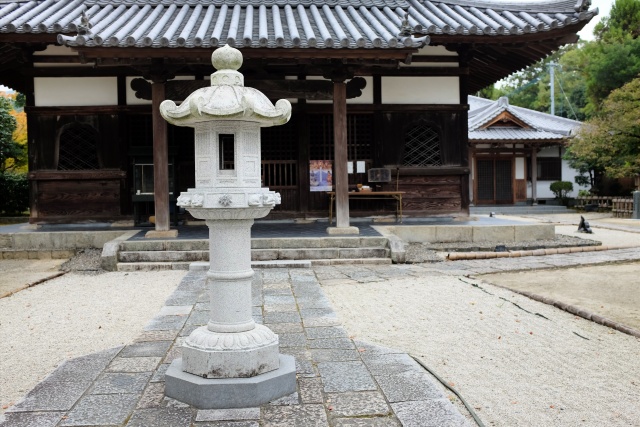
Dazaifu: Kanzenoji Temple
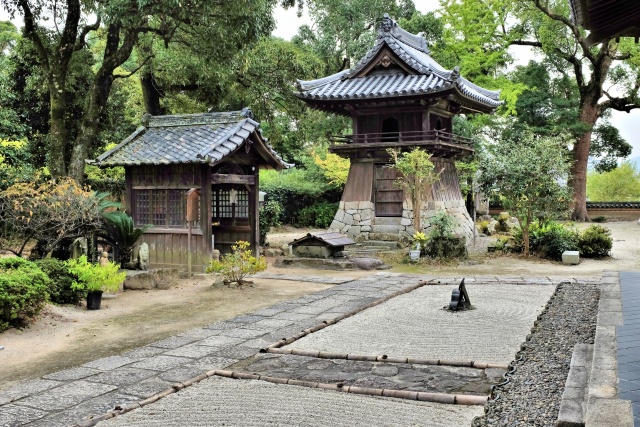
Dazaifu: Kanzenoji Temple
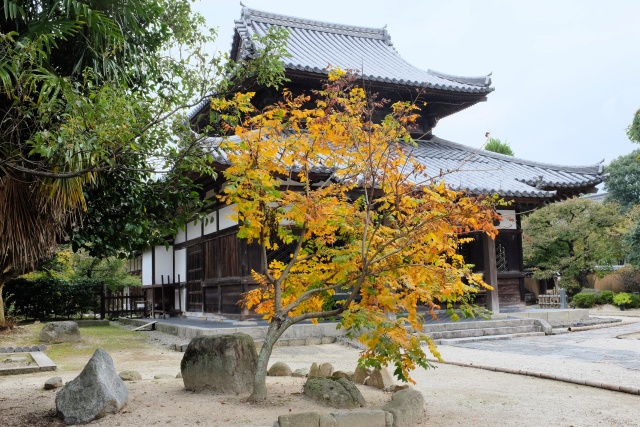
Dazaifu: Kanzenoji Temple
Night in Hite
The good morning weather did not last even until 10:00. Then clouds covered the sky and it was only a matter of time before it would be raining. I arrived in Hite still dry. Among the buildings in the center I found a playing field with benches and a pleasant spot under a tree. There was even a shelter, which I kept in reserve in case it started to rain. I marked the site in my GPS, so I could find it even in the dark, and set off to find something to eat. Meanwhile, heavy rain started to fall, so I stretched out my meal. After half an hour, it was clear that the rain would persist for a long time. I put on my waterproof clothes and returned to the camp. Although the shelter was comfortable, dry and roomy, there was a bright light under the roof. It was as if I was on display to all the houses around. In such cases, it is best to act as if everything is totally normal and not try to hide away. I pitched my tent and started to work on my laptop. Two ladies with a dog came to check me out and had two bits of news for me – one good and one bad. The light would be turned off at 22:00 and it would continue to rain the whole of the next day.

Amagasa Spa: Spa town with atypical half-timbered houses
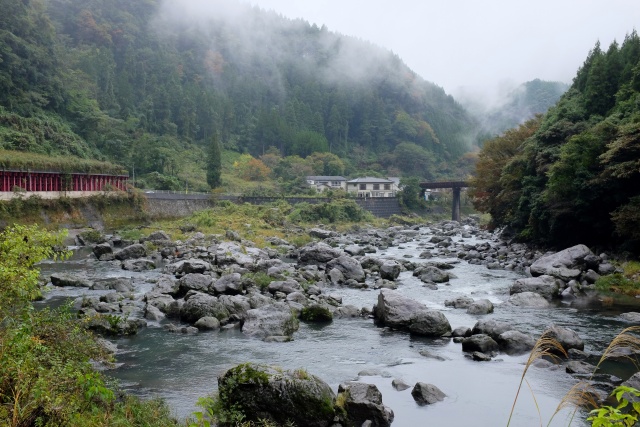
Near Amagasa Spa: In good weather, Road 210 route must be very scenic
I had just managed to pack up my tent when my peers appeared to play a local variety of golf for the retired on the field next to the shelter. I entered Yufuin in the GPS and double-checked the route on my detailed map. It was a good thing that I'd checked; the GPS wanted to drag me over hill and dale, those 55 km would have taken me two days. I set off, the speed sensor was not functioning, displaying a weak battery symbol. I returned to the camp, exchanged the sensor for the spare one and luckily everything again started to work.
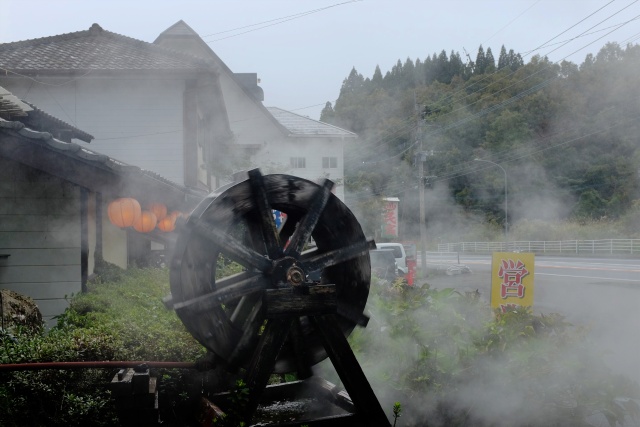
Spa near Yufuin: Wooden wheel propelled by the steam seeping from the ground
I started out on Road 386, the same as the previous day, then took Road 210 and remained on it all the way to the coastal town of Oita. It rained persistently the whole day, with only a two-hour break around lunch time. Then everything dried out on me while cycling up the hills and I got totally soaked by rain again immediately afterwards. The road was quite busy. I cycled on the pedestrian paths wherever it was the slightest bit possible. But the local drivers were nicer to me than the ones in Korea, and that included even the bus drivers. Nobody honked their horns at me for the whole day. If they could not overtake me, they simply waited. I, on the other hand, tried to make space for them whenever I had a safe possibility.
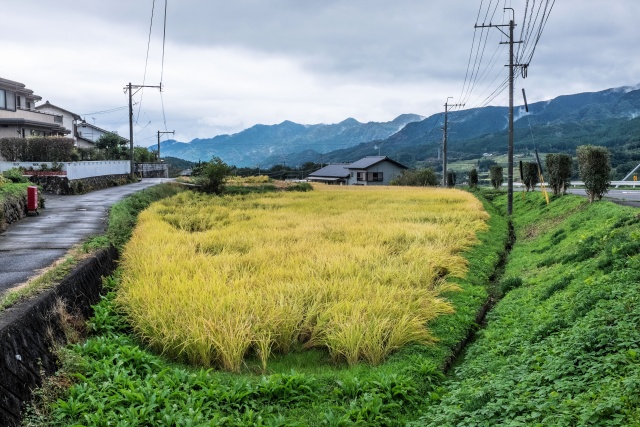
E of Yufuin: A small rice field with an impressive background
The other difference from Korea is the unbelievable number of supermarkets. In Korea it is hard to find them, most food is sold on markets. This was fine, but I often did not know what I was buying and could not predict the price. I also came across a Hotto-Motto take-away outlet, selling food in boxes — a chain of which I had been a frequent customer on my previous trip. Out of nostalgia, I bought a box this time, too, and ate it at a bus stop.
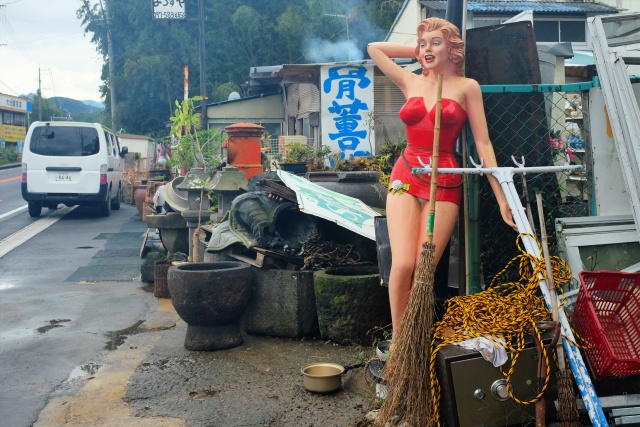
Halaba: Desecrated and rejected
It was clear that I would have to stay in a hotel in Oito. It was a bigger challenge to search for hotels than in Korea, where such buildings have a typical shape and almost all of them display the sign "Motel" in Roman letters. I tried the Toyoko Inn, but they were fully booked, so I found accommodation in a nearby hotel. There was a spa in the lower basement. I soaked my body, wrinkled from the rain, in hot water and was ready for sleep. The scale revealed that my weight had dropped to under 61 kg. As the medic on this trip, I ordered that the team was to start getting double portions from the following day on.
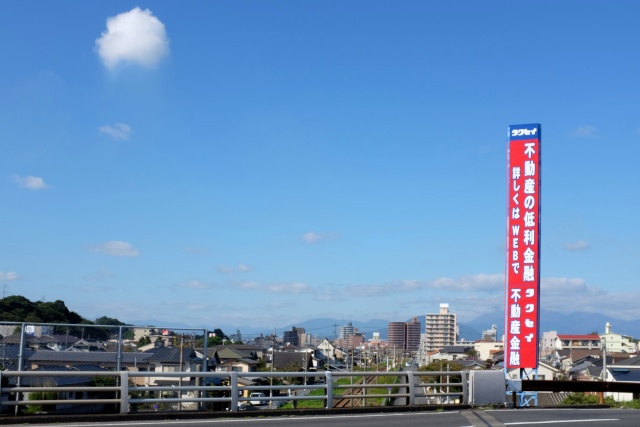
Oita: Outskirts

Kozaki: Coastline
The Day of Tunnels
I wanted to cycle as much as possible along the coast on my way from Oito southwards to Saiki. The most suitable route was via Road 197, later connecting to Road 217, on which I remained all the way to my next destination: Saiki. I must have passed through at least 25 tunnels and I'm only counting those longer than 300 meters. Most of them were modern, which meant that they were well-lit, ventilated and equipped with a wide extended lane for pedestrians and cyclists, often having a rail separating them from the vehicles. The route was easy and I could slacken off a bit and enjoy the nearby ocean.
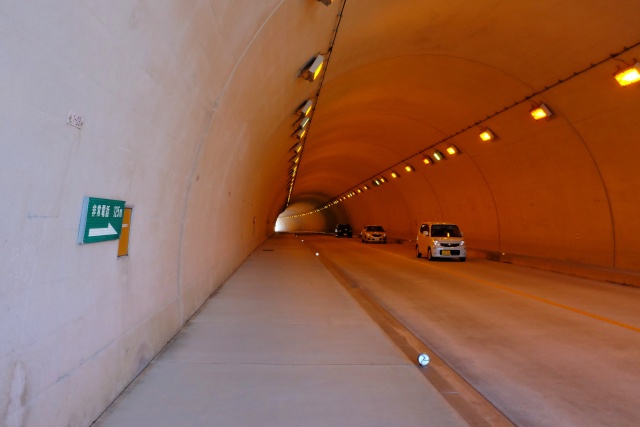
Saganoseki: One of the modern tunnels with a luxurious, 2 m lane for cyclists and pedestrians
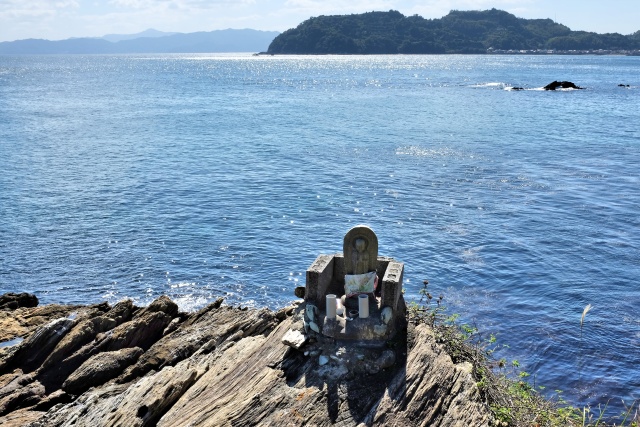
Isshaykuya: Small altar on the coast
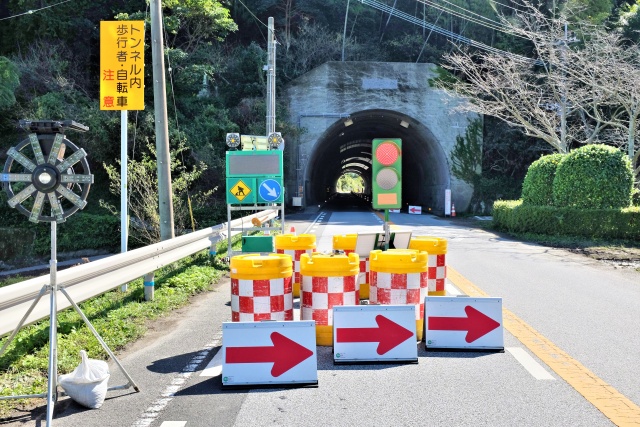
Near Usuki: There were several roadworks en route
I really enjoy searching for places to pitch my tent. I usually arrive in the destination about one hour before dusk. At first, I try to locate some green areas on the GPS, usually without luck, so I search for a river or the seashore, where parks, public restrooms and water are almost always on hand. If I fail in that, I cycle at random through the city and note at least partly suitable places in the GPS. That is when it gets closer to dusk, so I cycle somewhere to find something to eat. After dinner, I return to the place I had liked the most, pitch my tent, have a wash, drink a beer – or something better – and then edit photos, write a blog and, before falling asleep, read some fiction on Kindle.
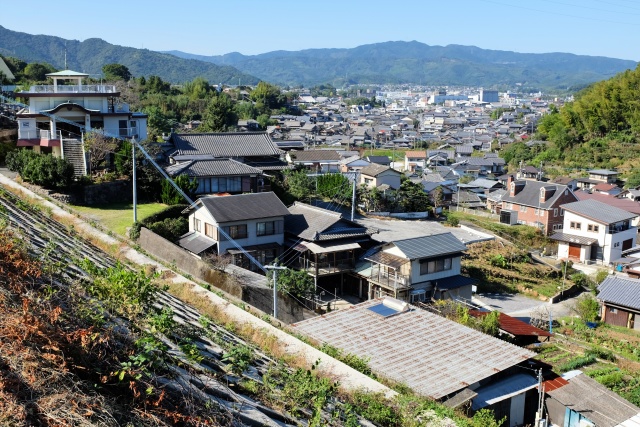
Usuki: View over the city
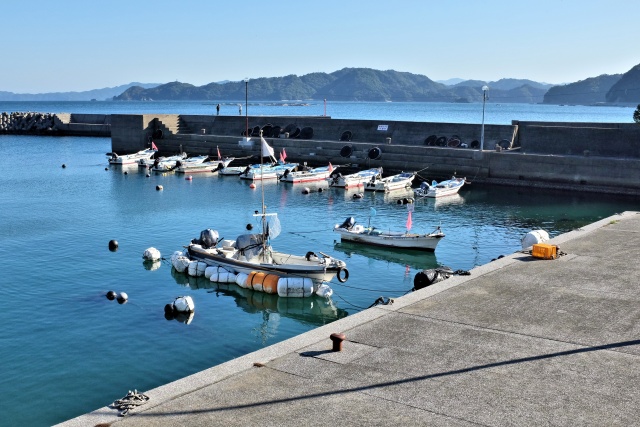
Kaizaki: Harbor
My new tent is light and has a lot of space in it, but it also has its bad side. I am most annoyed with the flysheet. It is made of a material which is not resistant to water. Instead it absorbs water and becomes damp even from the inside. But water, of course, does not leak into the tent. This becomes a problem in humid areas, the tent is all dry inside, but the flysheet is soaked in water. If I pack the tent up in this state, everything becomes damp, which is really irritating. This was the case that morning – humidity in the air, as I had camped next to a river. That is why I packed everything except the tent, which I moved into the sun to dry out for another hour while I ate a modest breakfast – some biscuits and mandarins.
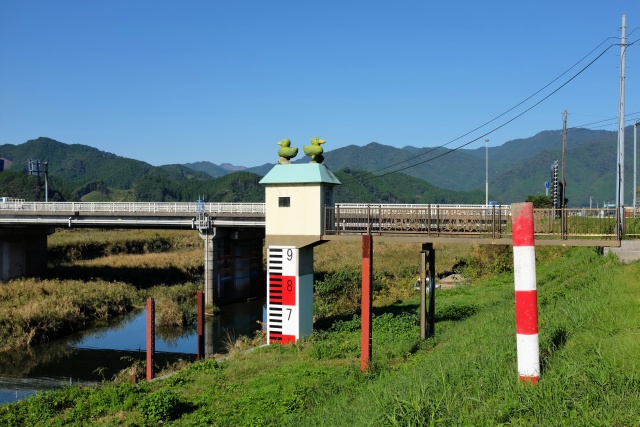
Yoyei: Floodgate
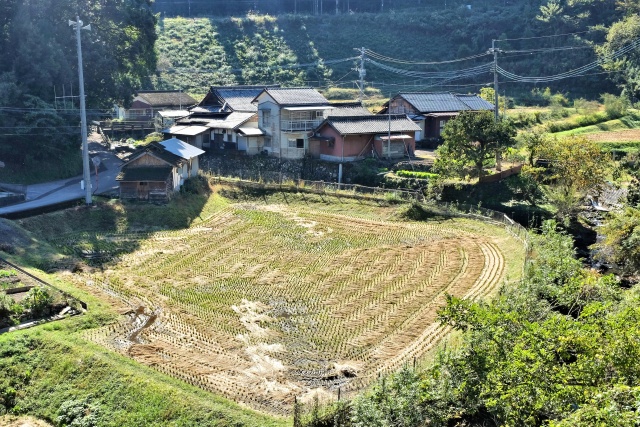
Naokawa: Harvested rice field
I decided to take Road 10, which went inland along two rivers and, according to the map, would only have a few short tunnels. It seemed as if there would be an ascent, then the tunnels, and then a descent. This is exactly how it was. I could have chosen a road along the coast, but only in the beginning, then on the map it had numerous twists and turns. Almost no "saving" tunnels – every hill would have to be pedaled up. Tunnels in Japan are great. Just when I was getting tired of ascents, a tunnel would appear and take me to the next valley.
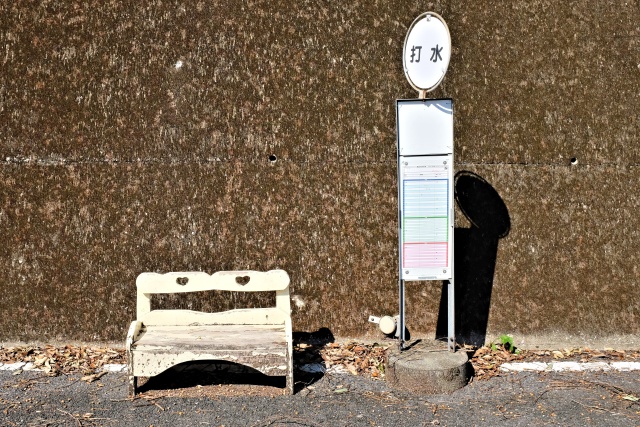
Naokawa: Bus station
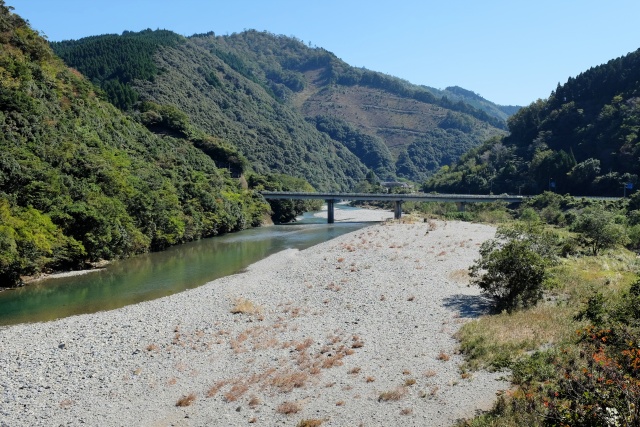
Sotaro: Mountainous and forested landscape
The tunnels on Road 10 were very old, without a pedestrian lane and even without a side lane. But they were also short and the traffic was minimal in those hills. I did not even need to turn on the blinking light, I was always alone in a tunnel. They were starting to decay, cracks in the walls, damp breaking through. Two of the tunnels were under construction and only one lane was open. The guys in charge of managing the traffic through the tunnels did not allow anyone else in them while I was cycling through.
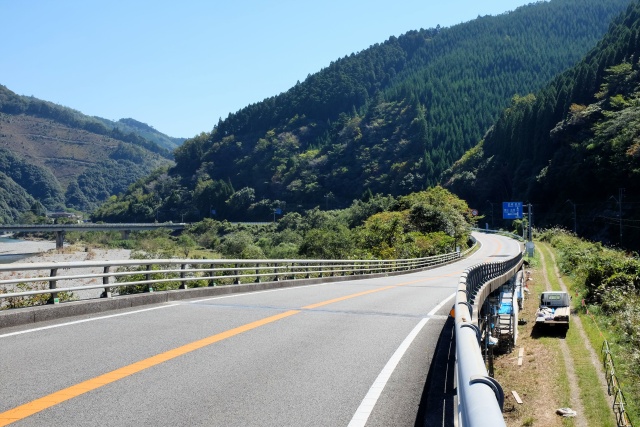
Sotaro: Road 10
Before midday, I started suffering from hunger. I ate everything I had left: mandarins, cucumber and two biscuits. There were still 20 km to Nobeoka and I was really suffering. Then a sign appeared for a "service station". This was usually a rest place beside the road with one or more restaurants, bathrooms, a store selling local products, often even a spa. They were usually 80 km apart, but not always. Five years before, I usually slept at those stations on the grass near the parking area. I ate my fill, ate some extra rice and the world looked rosy.
I arrived in Nobeoka and continued on Road 10 in the direction of Miyazaki and the idyll reached its end. The road became busy, no side lane. I rather cycled on the pedestrian paths, which were dedicated both to pedestrians and cyclists. Only in places where the path was too narrow or bumpy, did I switch to the road.
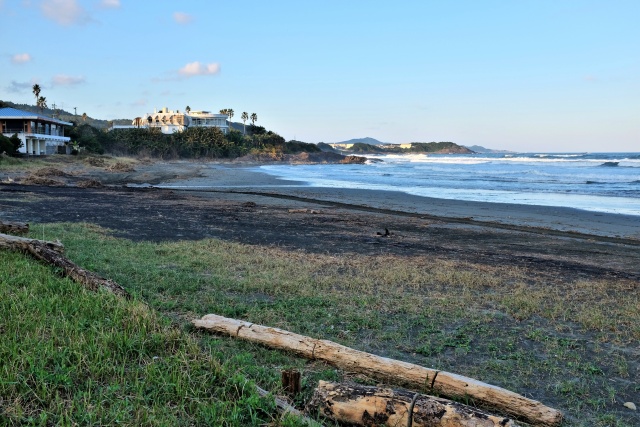
Hyugo: Popular Kanegahama Beach
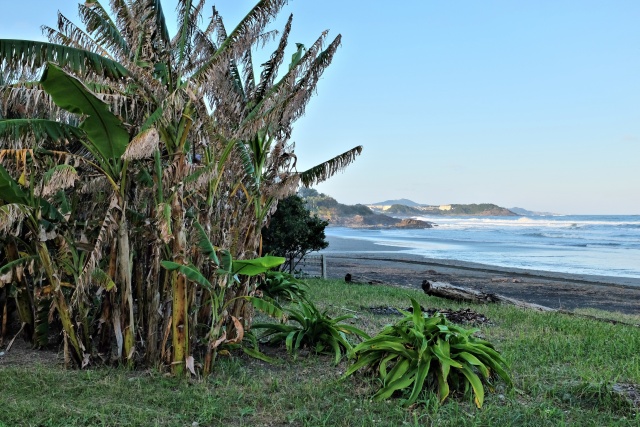
Hyugo: Banana trees growing on Kanegahama Beach
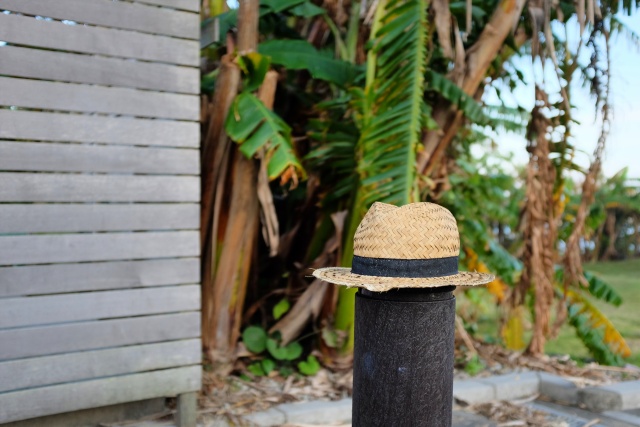
Hyugo: The season is over, but the hat remains
In the Onsens
I saw on the map that there was a service station 20 km past Nobeoka, after Hyogo city. I wanted to sleep over there. However, 2 km before the station I discovered a perfect "hotel" on Kanegahama Beach. There were even coin-operated showers. One shower cost 200 JPY (about 40 CZK or $2) and there was a nice flat grassy area. I cycled to the service station for something to eat, planning to return to the beach. However, 500 meters past the service station, at the sea, was a spa building with everything, including a restaurant. I pitched my tent in their parking lot, took the most essential items with me and headed for the warm water. It was amazing after several days without a hot shower. I enjoyed the hot water pools and sauna and ended up in the rotenburo (an outside pool) gazing at the stars. Then I had to lie down on a bench for a bit to sweat it all out and establish a normal body temperature. I only ate udon for dinner (a soup with thick noodles). I was still full from lunch.
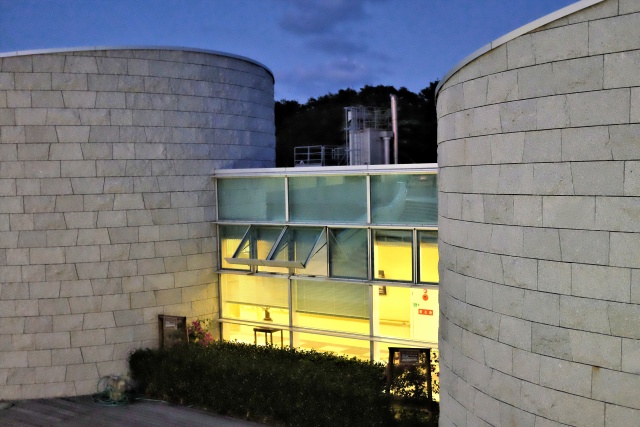
Mimi: Spa building
A small side note for men suffering from a complex regarding the size of their manhood. I recommend a few days in Japan and a daily spa visit. Your complexes will vanish.
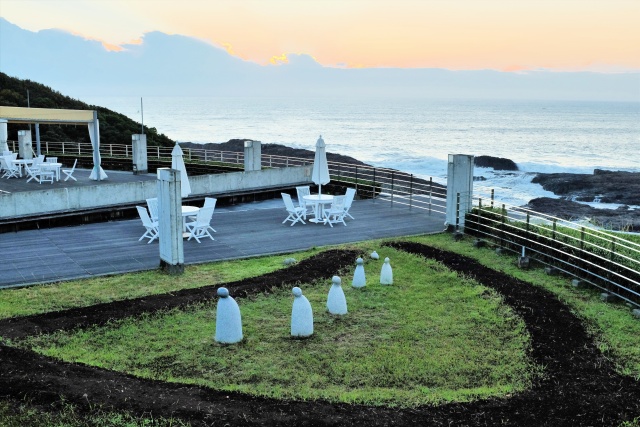
Mimi: Dawn on the coast from the spa

Tsuno: Roadside statue
I thought I would eat at a service station, but the restaurants did not open until 09:00. People were sleeping over in five cars in the lower parking area of the spa. However, the parking lot of the service station was packed. There must have been at least 20 personal cars with people sleeping in them. There were even two cyclists: a Japanese from Oita was sleeping outside on a bench and the second one was still in the tent. I ate my last four mandarins and left. Of course, some kilometers later, a combini appeared – this time Lawson Station. I bought an instant noodle soup, poured hot water over it and made some tea in my bottle. This, together with two cakes, was enough to fuel me.
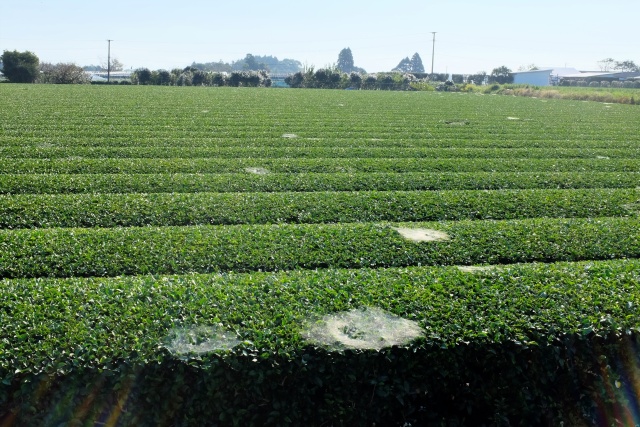
Takanabe: Tea plantation
I did not enjoy Road 10, it was too busy. I turned on to Road 372 towards the coast, little traffic, but boring – a straight road beside a train line, around it only fields and the coast visible at times. The road connected to Road 11, which I followed all the way to Miyazaki. In a massive AEON shopping mall, I ate and stocked up on my reserves. There were also two bike stores, but neither sold a chain for 9 gears. I then got so lost there that I had problems finding where I'd parked my bicycle. Finally, I purchased a new chain in a big cycle store along the road (cheaper than in the Czech Republic). To show their gratitude, they even pumped my tires.
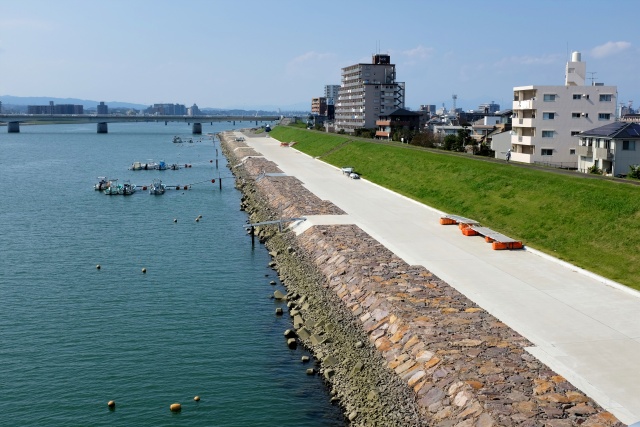
Miyazaki: Oyodo River
To make sure, I took out the GPS and let it lead me on to Road 269 to Miyakonojo. On the detailed printed map, a service station was marked at a reasonable distance, where I planned to spend the night.
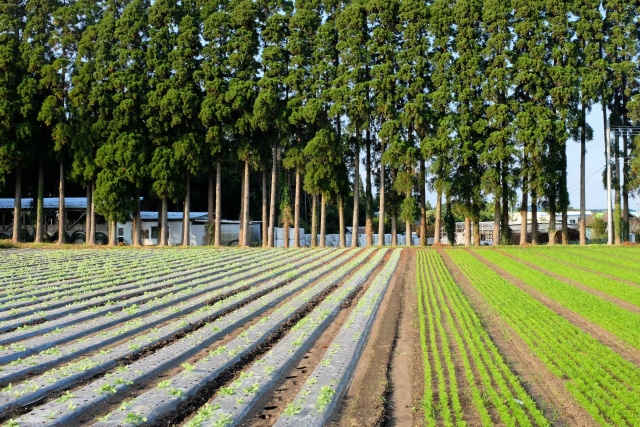
Tano: Field
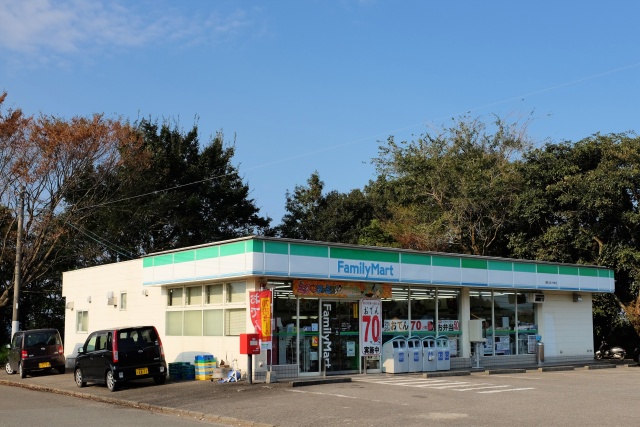
Tano: Family Mart – typical combini open 24 hours a day
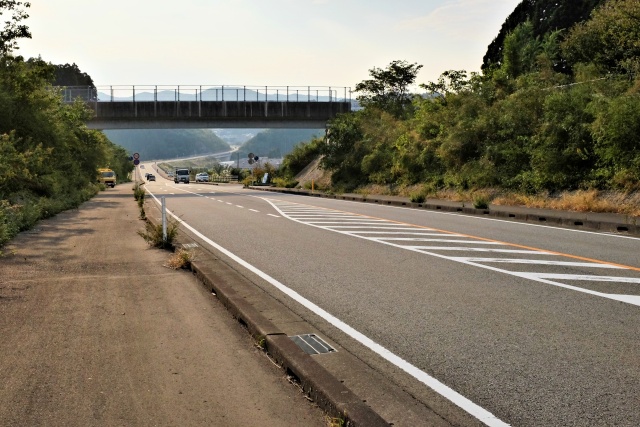
Tano: Road 269 – sidewalk for cyclists and pedestrians on the left
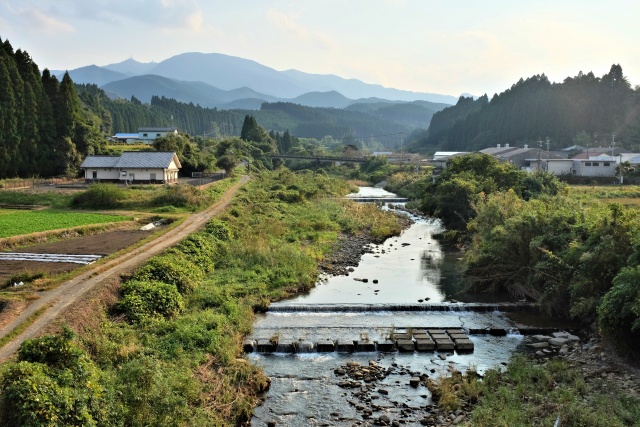
Tano: Mountainous landscape
A spa appeared a few km before the station. When I smelled the sulphur aroma of the spring water, I decided to enjoy a bit of luxury and sleep over there. I pitched my tent in the parking lot and went to bathe. The spa was well equipped for the standard price 60-100 CZK ($3-5). Only the most modern and popular spas charge the equivalent of 200 CZK ($10). Pools of different temperatures, a whirlpool with strong bubble massage and, of course, a sauna. There was also one paddling pool, in which I swam instead. Somehow – I'm not sure why – I irritated other paddlers. When I was warm enough, I went to the outdoor rotenburo, where it was best to keep the upper part of the body out of the water (perhaps from the breastbone up) and if getting cold, then to pour water over the body from a small bucket. Only Onsen experts can appreciate the advantage of buckets compared to showers. I relaxed, watched the twinkling stars and felt in harmony with both the past and the future. By the way, the increased portions had this far had no effect on my weight. I would have to consume heavier meals – eggs, mushrooms, etc. in future.
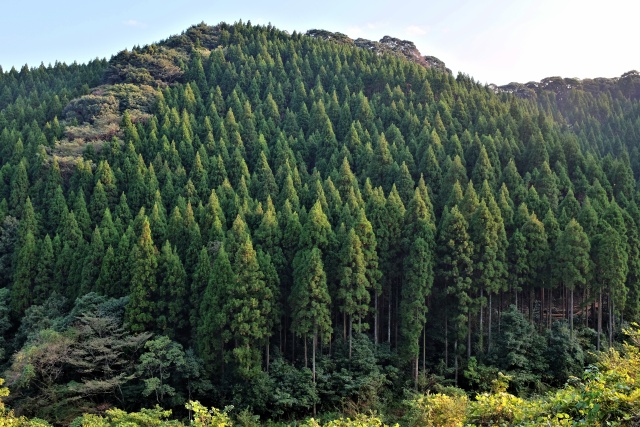
Tano: Dense healthy forest
The Unrest-Cure
I borrowed the title from the name of an anthology by Saki (just to show how much I know). What was happening: I had been feeling pain in the area of my left kidney for several days. It could either have been the kidney or my back. In order to diagnose it better, I bought 0.7 l of spirits and poured a small portion of it into my stomach. If it was the kidney, then the kidney would become really irritated by the alcohol. That did not happen, so it was most likely the back. The good thing was that I hardly felt it when cycling. I hoped that my body, well tested over time, understood that pain does not get it anywhere and would give up on it.
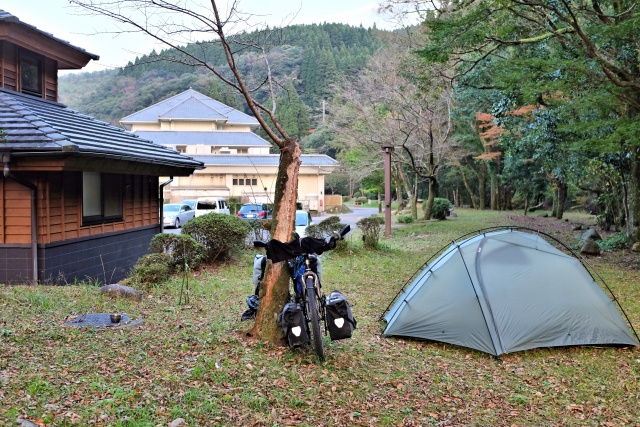
Aoidake Spa: I encamped a short distance from the spa buildings
I had to fix my bike already the next morning. The back brakes were worn out, there was no "meat" on them any more and they were practically not braking at all. I needed to replace them. After doing this, I ate a Camembert for breakfast, which I'd bought the day before, but which proved to be incompatible with the Asian contents of my stomach and resulted in a minor health issue. This I bravely solved by running to the nearest restroom. Meanwhile the clouds were gathering in the sky and it was a matter of time before it would be raining. In those hills, the rain arrived together with a storm. After I put on my waterproof clothes, there was no longer any thought of sitting in restrooms. I was sorry that I could not fully enjoy the winding, steep 10 km long descent. Instead I had to be very careful when cycling along the worn-out flooded route. It was a good thing that I'd fixed the brakes that morning.
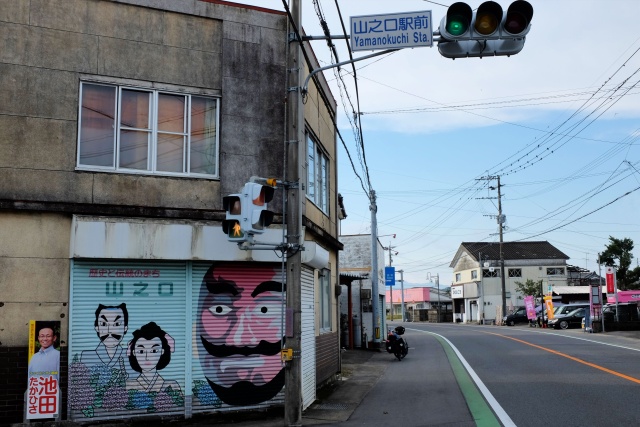
Yamanokuchi: Miyakonojo outskirts
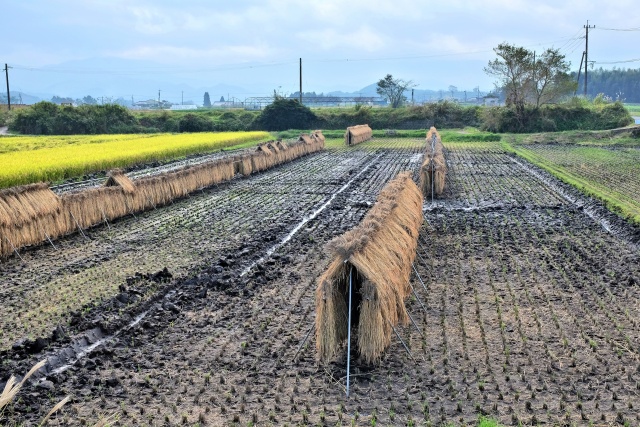
Miyakonojo: Drying bundles of rice
Everything happened on Road 10 which, with the passing of time, got busier and busier. After 14:00 the rain stopped. I dried the jacket and pants while still on me and then took them off in relief. It was really hot and I had sweated like a pig in the waterproof clothes. I approached Kagoshima and remembered that I had taken this exact route five years before in the opposite direction, before it turned into the mountains 20 km later. I remembered the road along the coast was very narrow, packed with cars and without a side lane. Nothing had changed there, it was very unpleasant, especially on a Sunday when people were returning to the city. But there was no space, steep cliffs down to the sea and also a train line next to the road. The only solution would be a tunnel or a construction with a scaffold bridge over the ocean.
What's more, a pod of dolphins were leaping close to the shore, but I had nowhere to stop to photograph them. I had to wait until the road got wider, but then these excited mammals had already moved further away from the shore. Here is at least one photo: remember that I was using a fixed 35 mm lens without a zoom.
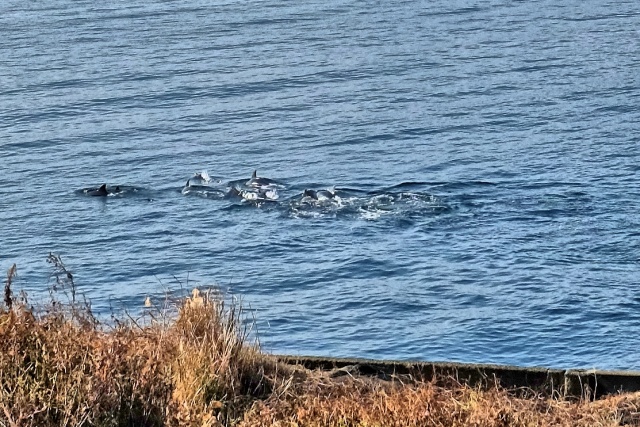
Kagoshima: Dolphins frolicking near the shore
Kagoshima
Then Sakurajima revealed itself — an active volcano on a peninsula in the bay. It sent up some smoke as a good-bye. It was easy to navigate through the city, I still remembered where the main railway station was, mostly used by Southern Cape Shinkansen high-speed trains. I confirmed in the Info Center that the ferry to Okinawa would depart on the Tuesday at 18:00. Then I searched for half an hour for a hostel near that station, which I then found by pure luck. Out of nostalgia, I was accommodated in the same (not so great) room as I had been in years before. They had no better rooms. I only needed to wash my clothes, which I could do there free of charge. It would also be easier to replace my chain there than in front of some shiny hotel.
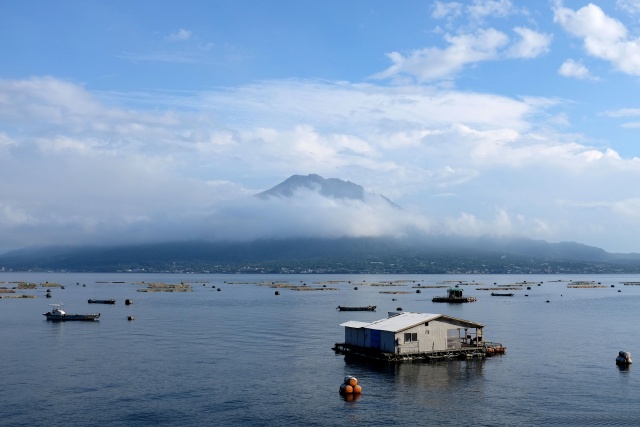
Kagoshima: Active Sakurajima volcano on the peninsula in the bay
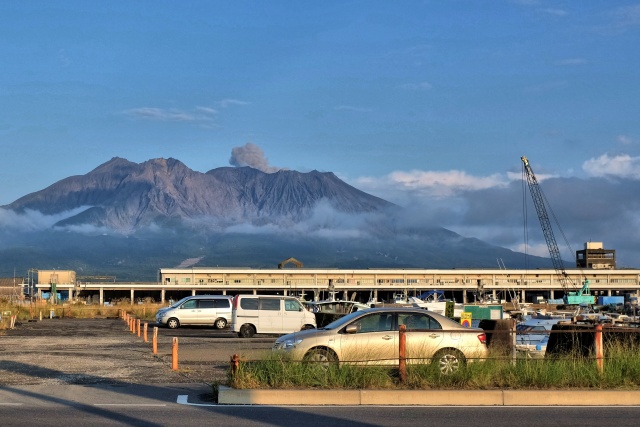
Kagoshima: Sakurajima puffed in the evening
I dedicated the free day in Kagoshima to the bicycle service and laundry. I spent that morning in my shorts and softshell only; everything else was spinning in the washer and drier. I had to watch out when changing the chain, as I did not have my favorite SRAM with connectors, but the original Shimano with gauge. This is why I first shortened the new chain (as per instructions: pulled it over the biggest chainwheel and freewheel, plus two links). When I succeeded, I dismantled the old chain and replaced it with the new one. I oiled everything, washed off layers of mud and the rusty frame bloomed as it had in springtime. A joy to behold!
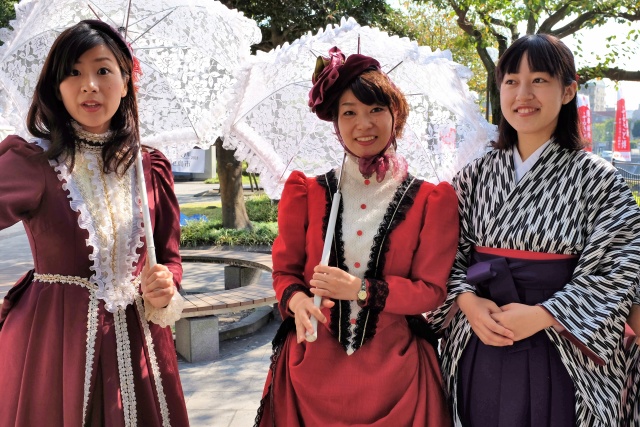
Kagoshima: Traditionally dressed women promenading along the river, unfortunately only consenting to being photographed

Kagoshima: These beauties are smiling – it is in their work description
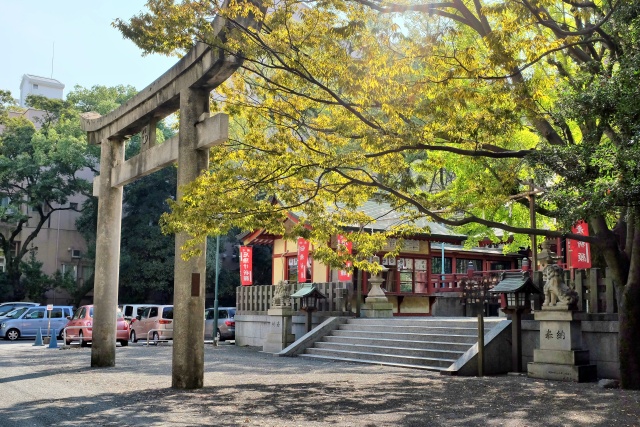
Kagoshima: Fall is here, regardless of the beautiful weather
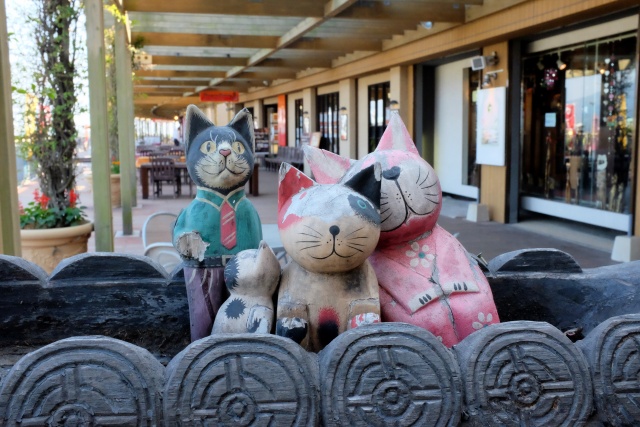
Kagoshima: At Dolphin Point terrace
I needed to buy an extra battery for my camera and one for the spare speedometer of my cyclocomputer. Surprisingly, I succeeded in both these tasks. I would reach Okinawa after dark and my headlamp was totally unsuitable for cycling. I was looking for a bicycle lamp. They had at least 20 different models, but there was no space left for one on the handlebars. So I looked – and found – a lamp which I could attach to the front fork above the bags. I also tried to find bearings for the Hollowtech cranks, where I already had a gap of at least 2 mm (while only about 6000 km had been cycled with them), but they did not sell those. Maybe I would succeed somewhere later, as it was reducing the output.
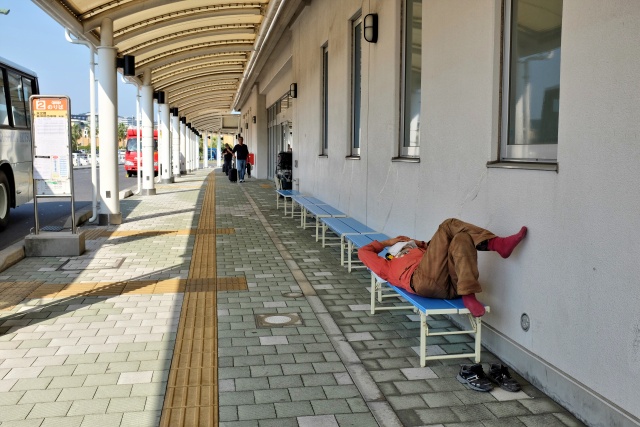
Kagoshima: A traveler at the ferry terminal
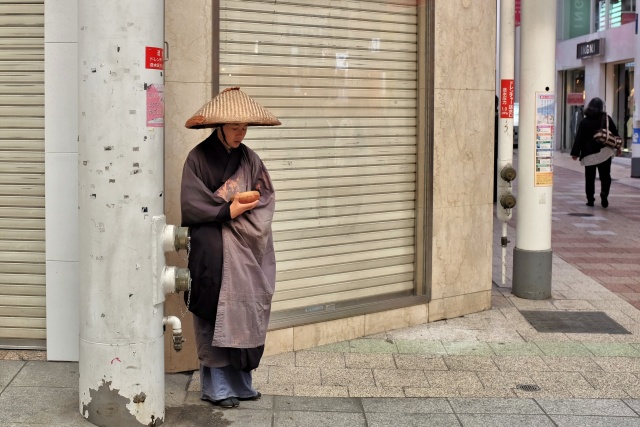
Kagoshima: Begging monk
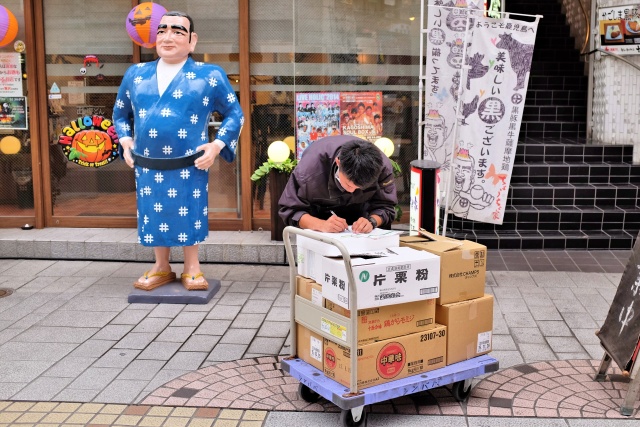
Kagoshima: Driver filling in delivery note with owner pretending not to see him

Kagoshima: I miss my grandkids
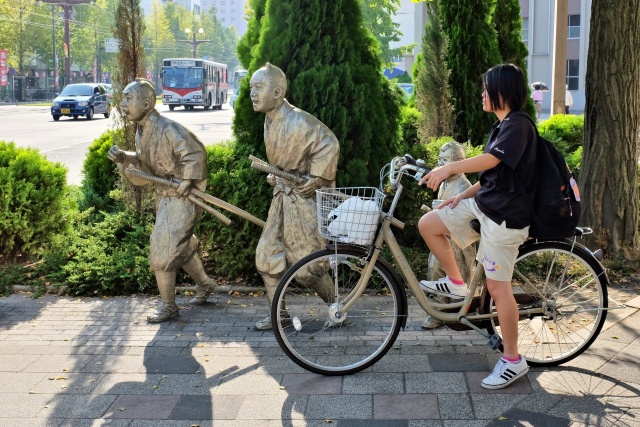
Kagoshima: Waiting for the green light
Then I merely wandered around the city, ate at times and drank beer or other indulgences. I looked around, took some photos and relished the sunny Fall day. The weather really amazed me there (ignoring the two days of rain). If it continued like that, I would be boiling on Okinawa and in Taiwan.
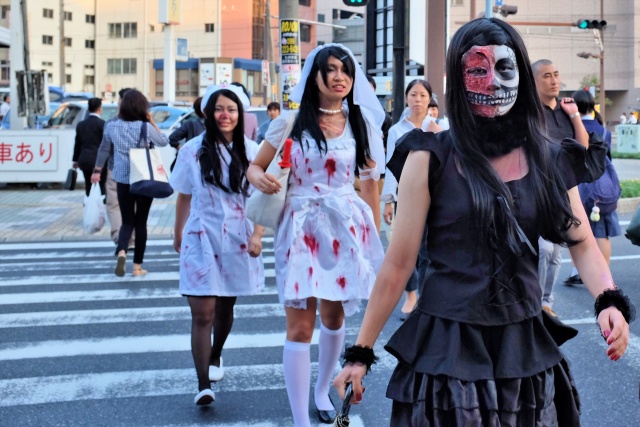
Kagoshima: The typical 'Japanese' holiday of Halloween is approaching and the girls are already preparing for it
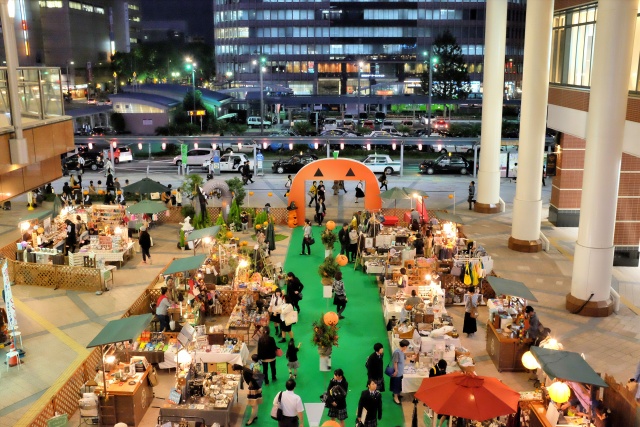
Kagoshima: Halloween market in front of the train station provides the possibility of selling something, Christmas is still a long way off
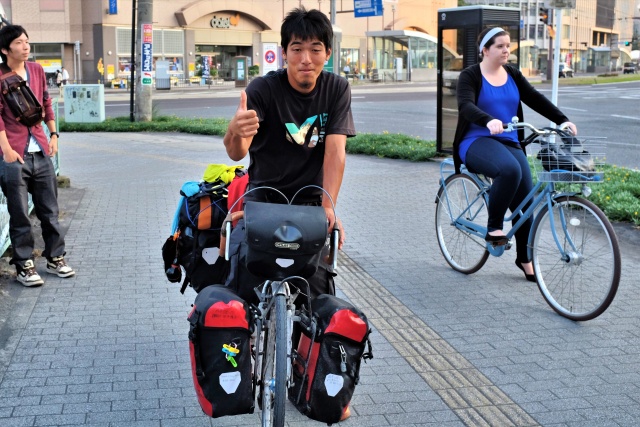
Kagoshima: This gentleman friend is also going to Okinawa, we'll meet up tomorrow on the ferry
I met a dedicated Japanese cyclist in the city (they can be recognized by the Ortlieb panniers). He would also be traveling to Okinawa the next day, so we would have 24 hours to discuss everything. But it did not seem as if English was our lingua franca. No problem – hands, feet, a few beers and we managed to make ourselves understood.
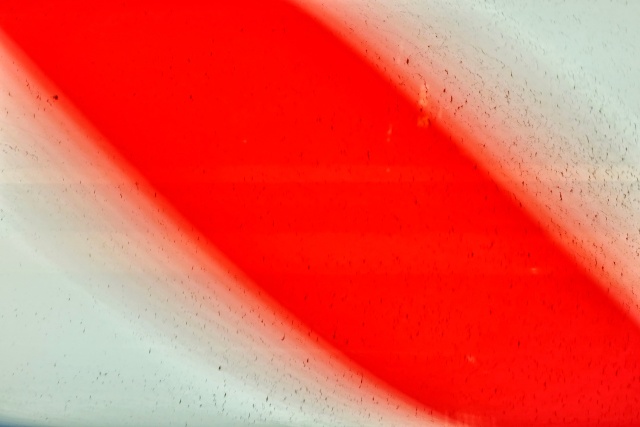
Kagoshima: It's Art, goddammit!
